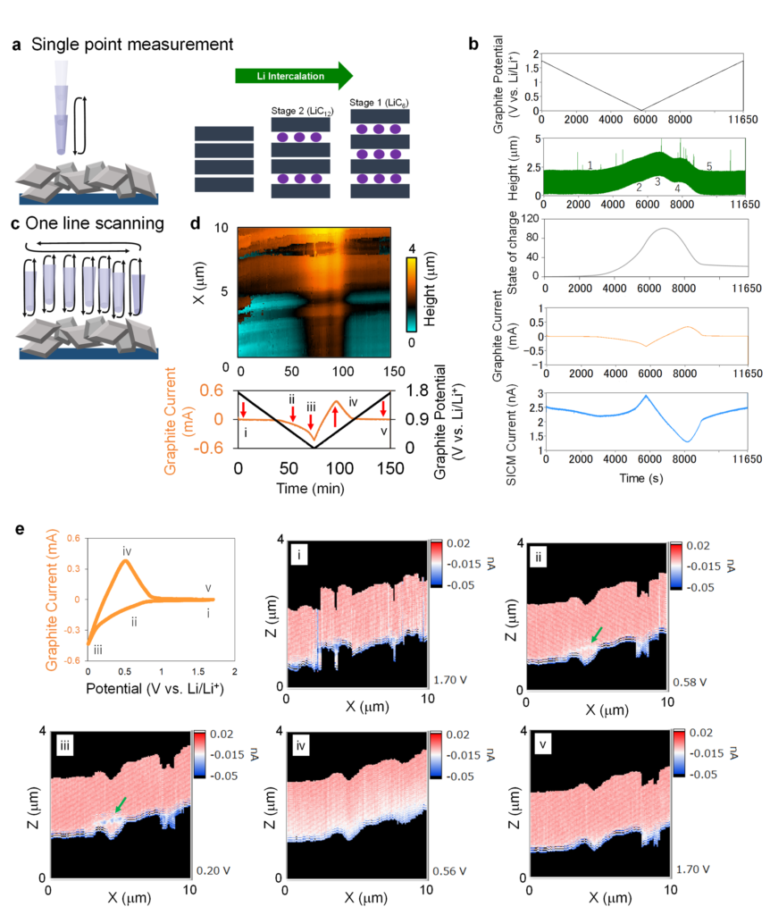Lithium ion batteries dominate the energy storage sector from the scale of small portable devices to electric vehicles and even grid-scale electricity suppliers. Research is constantly ongoing to improve their energy density, charging speed, lifetime and safety, among other attributes. Here an understanding of not just the changes that go on in lithium ion batteries but how different parameters might interact can be extremely advantageous.
Now researchers led by Yasufumi Takahashi and Takeshi Fukuma at Kanazawa University in Japan report simultaneous measurements of topography and ion concentration profiles by developing their operando scanning ion conductance microscopy (operando SICM). The combined data they retrieve can enable evaluation of correlations between the two parameters for improving future battery performance.
As Takahashi and Fukuma list in their report on the work, several processes are involved in the charging and discharging of lithium batteries, including the transport, solvation or desolvation, and intercalation of lithium ions, as well as structural changes and expansion in the electrodes, and the formation and deposition of by-products.
These all occur out of equilibrium under applied electric potentials. “Capturing such multi-step and time-dependent changes with a relevant spatiotemporal resolution enables optimizing the operating conditions,” they point out highlighting design features that might benefit such as the structure of electrodes and separator, and tailoring additives to ensure proper solid−electrolyte interphase formation.
As a result, numerous techniques have been used to investigate how both the surface topography and the ion concentration change of the anode/cathode during charging/discharging, all with different limitations.
A key advantage of SICM is that it can measure surface morphology and properties, including changes in ion concentration with depth in the electrolyte. Until now, however, no-one had
